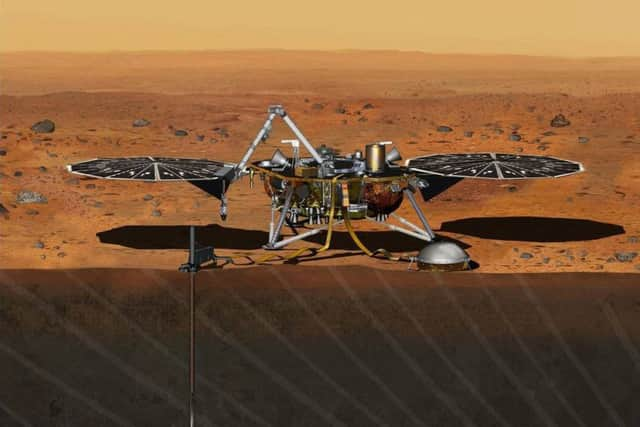Ancient rocks from Hebrides offer clue to life on Mars


A team of scientists from Scotland, Canada and US analysed samples taken from Barra and the Uists as part of a project to determine if hydrogen was formed after earthquakes.
The element is essential to support life, and researchers have theoriesed that it could be formed on the closest planet to Earth by so-called ‘Marsquakes’.
Advertisement
Hide AdAdvertisement
Hide AdThe study, which has been published in the journal Astrobiology, was carried out by scientists from the University of Aberdeen, working alongside colleagues from Yale University and Brock University.


The research was carried out in advance of NASA’s planned mission to Mars in 2018, which will monitor seismic activity on the planet.
It is hoped the conclusions reached by the Aberdeen team will be supported by the NASA expedition.
Professor John Parnell, of the University of Aberdeen’s school of geosciences, said: “Earthquakes cause friction, and our analysis of ancient rock in the Outer Hebrides has demonstrated how this creates hydrogen.
“Hydrogen is a fuel for simple microbes, so microbes could live off hydrogen created in the Earth’s subsurface as a result of seismic activity.


“This is a model that could apply to any other rocky planet, and on Mars there are so-called ‘Marsquakes’ that may produce hydrogen and therefore could feed life in the Martian sub-surface.
“Our analysis finds that conservative estimates of current seismic activity on Mars predict hydrogen generation that would be useful to microbes, which adds strength to the possibility of suitable habitats that could support life in the Martian sub-surface.
“NASA has plans to measure seismic activity on Mars during its 2018 InSight mission, and our data will make those measurements all the more interesting.”
Advertisement
Hide AdAdvertisement
Hide AdNASA had originally planned to launch its mission in March but was forced to suspend it for two years due to a serious technical fault.
“InSight’s investigation of the Red Planet’s interior is designed to increase understanding of how all rocky planets, including Earth, formed and evolved,” said Bruce Banerdt, InSight Principal Investigator at NASA’s Jet Propulsion Laboratory in Pasadena, California.
“Mars retains evidence about the rocky planets’ early development that has been erased on Earth by internal churning Mars lacks. Gaining information about the core, mantle and crust of Mars is a high priority for planetary science, and InSight was built to accomplish this.”
The relative positions of the planets are most favorable for launching missions from Earth to Mars for only a few weeks every 26 months.
The mission will now take-off in November 2018.
